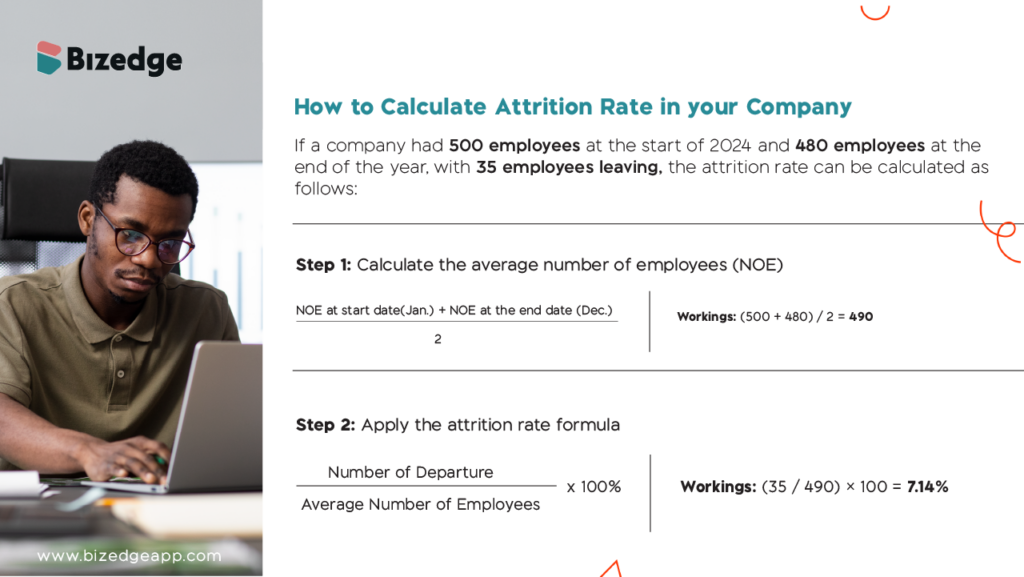
7 Tips for Reducing Employee No Call No Shows

How to Effectively Manage Employees in the Office
Attrition is a crucial HR metric that directly impacts organizational efficiency, employee morale, and overall business performance. As companies continue to adapt in 2025, reducing attrition rate will be essential for building a stable and engaged workforce.
No organization wants to invest time and resources in hiring and training employees, only to see them leave within a year. It’s frustrating not just in terms of lost investment, but also the disruption it brings to teams and workflows.
So, how can you effectively manage attrition? In this blog post, we’ll explore what employee attrition is, its causes and effects, how to calculate your company’s attrition rate, and, most importantly, practical strategies to reduce it in the workplace.
What is Employee Attrition?
Employee attrition refers to the gradual reduction of an organization’s workforce due to resignations, retirements or relocations typically without immediate replacements.
Unlike employee turnover, where positions are refilled quickly, attrition means that the role remains vacant for an extended period. This can leave gaps in knowledge and skills, causing an overburdened workforce and decreased productivity.
What is the Employee Attrition Rate?
The attrition rate is a key HR metric that measures the percentage of employees who leave an organization without being replaced over a specific period. It helps businesses gauge the stability of their workforce and evaluate the effectiveness of their retention strategies.
While a low attrition rate might appear favorable, it doesn’t always indicate satisfied employees. In some cases, employees may stay at a company only until they find a better opportunity. For true workforce stability, it’s essential to not only understand your attrition numbers but also gain insights into your employees’ needs and overall experience.
Formula for calculating attrition rate
Attrition Rate (%) = (number of departures / average number of employees) x 100
Steps to Calculate Employee Attrition Rate
- Determine the Number of Departures: Count all employees who have left the organization during a given period.
- Calculate the Average Number of Employees: Add the number of employees at the beginning and end of the given period, then divide by two.
- Find out the attrition rate: Divide the number of departures by the average number of employees and multiply by 100.

Regularly calculating and analyzing the attrition rate helps organizations implement targeted strategies to improve employee retention.
Common Causes of Employee Attrition
There are several reasons why employees resign from their jobs. Some are due to factors that are outside the employer’s control but, mainly things that can be avoided and prevented.
Understanding the root causes of employee attrition is essential to developing effective retention strategies. Here are some key factors that contribute to high attrition:
- Inadequate Compensation: Employees may seek opportunities elsewhere if their pay and benefits do not match their role and experience. Competitive salaries, health benefits, and performance-based incentives help retain top talent.
- Excessive Workload: Excessive workloads, long working hours, and inflexible schedules contribute to burnout. Employees who struggle to maintain a balance between their professional and personal lives may seek employment with companies that offer flexible working arrangements in order to stay healthy.
- Limited Career Growth: When employees perceive a lack of growth or promotion prospects within the organization, they may pursue career development elsewhere. Businesses that do not invest in training, upskilling, or internal promotions often struggle with high attrition rates
- Poor Management Practices: A toxic work environment, lack of recognition, or micromanagement can drive employees away.
- Relocation or Lifestyle Changes: Employees moving for personal reasons may be forced to resign especially if remote work options are unavailable.
Effects of High Attrition Rate
High attrition rates can disrupt team efficiency, slow down operations, and increase recruitment costs in the long run. It also signifies a net loss in staff numbers over time.
According to Matt Tenney, it costs much less to retain a worker than to recruit, onboard, and train a new hire. It costs 6 to 9 months’ salary, on average, to replace a worker.
Strategies to Reduce Employee Attrition
Addressing the factors that contribute to attrition requires a multifaceted approach. Implementing the following strategies is a major strategy to reducing attrition in the workplace:
- Offer Competitive Salary: One of the most effective ways to retain employees is to offer competitive compensation packages. This includes not only base salary but also bonuses, stock options, and other benefits. Regularly reviewing compensation structures ensures that employees feel adequately rewarded.
- Provide Professional Development Opportunities: Employees value opportunities for career advancement. Providing mentorship programs, leadership training, and educational reimbursement can encourage employees to grow within the organization rather than seeking opportunities elsewhere.
- Implement Flexible Work Arrangements: Offering options like remote work, flexible schedules, and compressed workweeks helps employees balance their work and personal lives. Post-pandemic trends show that flexibility is a major factor in job satisfaction and retention.
- Strengthen Leadership and Management Practices: Investing in leadership development ensures that managers are equipped with the skills to lead effectively, provide constructive feedback, and build strong team dynamics. Effective leadership is a crucial factor in employee retention.
If you’re looking for a simpler way to measure key HR metrics, BizEdge makes it easy for your human resource team. Learn more with a demo today!
